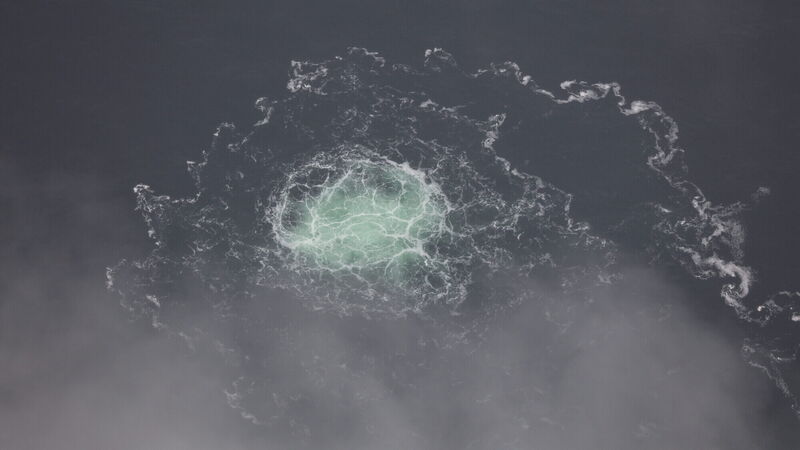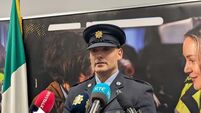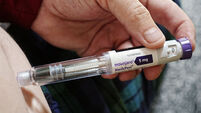Public sees damage to subsea cables in Irish waters 'a high-level national risk'

The leak from Nord Stream 2 in the Baltic Sea in September 2022. Picture: Swedish Coast Guard via AP
Damage to data and energy subsea cables will be listed as major national risks facing the country in a forthcoming Government threat assessment, it has emerged.
The move follows agreement among experts and the general public, polled in a survey, as to what national risks confront Ireland.
The development was revealed at a high-level seminar at the Belgian embassy, co-hosted by the Azure Forum for Contemporary Security Strategy.
The seminar was addressed by Lieutenant General (retired) Hans-Werner Wierman, head of the Critical Undersea Infrastructure Coordination cell at Nato.
The unit was set up last March in response to explosions on the Nord Stream gas pipelines in the Baltic Sea in September 2022.
Margaret Stanley, principal officer at the Office of Emergency Planning in the Department of Defence, said for the “first time ever” the Government’s next National Risk Assessment will identify damage to undersea infrastructure as a key national level risk.
“I think that’s a very significant development,” she said.
Ms Stanley said a public survey, conducted to inform the assessment, found people also see damage to underwater infrastructure as a “very high-level national risk as well”.
“Certainly, we are acutely aware that Ireland’s economic and geopolitical situation has led to global communications and energy infrastructure running through our waters," she said. "That makes us vulnerable to these new and emerging threats.”
Opening the seminar, the Belgian ambassador Karen Van Vlierberge said Ireland recently concluded an individually tailored partnership programme under Nato’s Partnership for Peace to exchange expertise and training on resilience, maritime security and cyber security.
Mr Wierman said his unit examines the threat to communication and data cables, energy connectors as well as gas and oil pipelines.
He said attacks on these cables form part of what is known as “hybrid attacks”, which cover hostile actions short of military attacks, and said they play a “very significant role” in Russia’s strategy.
His unit is developing its information base from 70 or so civilian and military intelligence agencies, the private sector and from analysing satellite data.
Mr Wierman said information exchange will be “very much in the interest of a country like Ireland, being an island, and having a huge maritime footprint”.
Ms Stanley said the general’s visit was a great opportunity to exchange information.
“I see cooperation as being critical and really the only way,” she told the seminar. “To monitor these cables requires a huge amount of resources and capability."
Ms Stanley said her office is also working on transposing the EU Critical Entities Directive. She said they would be conducting risk assessments to identify critical entities and said these sectors would then have to carry out their own assessment and actions.
Brendan Flynn, assistant professor of political science at University of Galway, said Nato naval experts have “tonnes to offer” Ireland in terms of their experiences and knowledge.
He said it would be “absolutely crazy” to adopt a position of refusing to cooperate with the military alliance in this area.
He said 400 cables transit the north Atlantic, most of them through Irish controlled waters, and 200 of these cables are designated as critical.
To monitor, police and repair cables, he said Ireland needs to develop partnerships with countries like Belgium, France and Britain.









